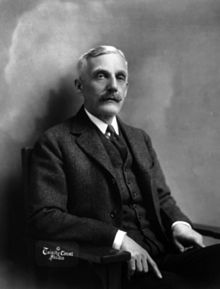The 1920s was a period of excellent economic growth for the United States. The nation had just victoriously finished fighting in World War I, which had allowed increased industrial production. Many American residents had just begun to buy products on credit. Even a lot of big corporations, such as GM, gained huge profits from speculation. Americans also enjoyed plenty of entertainment from movies and radios. Meanwhile, the U.S. government tried to not interfere with the economy since they had embraced the concept of supply-side economics* (as advised by Secretary of Treasury Andrew W. Mellon). But the lack of government intervention didn't seem to matter because the 1920s had arguably the image of an "American Golden Age". It is this "Golden Age" that many conservative Republicans today, especially Donald Trump, strive to go back to. But F. Scott Fitzgerald had noticed that the economic boom had come at a huge cost: poverty among the working class.
Fitzgerald had described this poverty as "a valley of ashes" in The Great Gatsby (Fitzgerald 23). He uses this metaphor to create an image of a filthy area. Since the area was so dirty, many "men" living in this area, such as George B. Wilson, are assumed to be of the lower class (Fitzgerald 23). Fitzgerald even includes a description of Doctor T. J. Eckleburg having "a pair of enormous yellow spectacles" to demonstrate how rich the man is because "yellow" looks very similar to gold (Fitzgerald 23). The fact that Eckleburg's portrait is above the "grey land" conveys the massive gap between the working class and upper class (Fitzgerald 23). Fitzgerald even seems to convey that the gap represents how only the upper class (and perhaps a bit of the middle class) were benefitting from the economic boom of the 1920s while the working class barely got any benefits at all. It is even very possible that some members of the working class desire to enjoy the pleasures of the upper class. Fitzgerald demonstrates this through Myrtle Wilson, who had claimed she "made a mistake" marrying Mr. Wilson (Fitzgerald 35). She is unsatisfied with Wilson because he wasn't wealthy. So she tries to be "Tom Buchanan's mistress" because she thinks Tom is her golden ticket to the wealthy class (Fitzgerald 24). Ironically, while Tom lets Myrtle be his mistress, they would not "get a divorce and get married to each other right away" (Fitzgerald 33). This perhaps shows that Tom does not want a lower class women to move into the upper class. Tom even "broke [Myrtle's] nose" at the end of chapter 2 (Fitzgerald 37).
Donald Trump had promised that he would "make America great again." He was referring to the excellent economy of the 1920s and how it was a "Golden Age". However, even if Trump succeeds in promoting a similar economic boom as the Roaring 20's, he would, according to Fitzgerald, be isolating the lower class. That's because many conservatives today in this country have the mindset of creating economic stability by using supply-side economics, which would mean practicing laissez-faire economics that mainly benefit the upper class. This concept would actually lead to a wider gap between the rich and the poor rather than a narrower one.
*Supply-side economics is a theory in which money from the upper class would gradually "trickle down" to the lower classes as the people of the upper class spend their money.

No comments:
Post a Comment